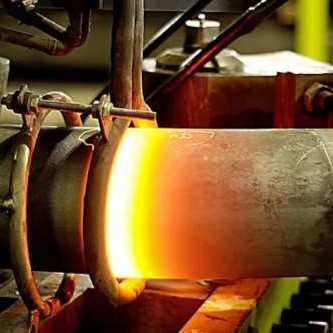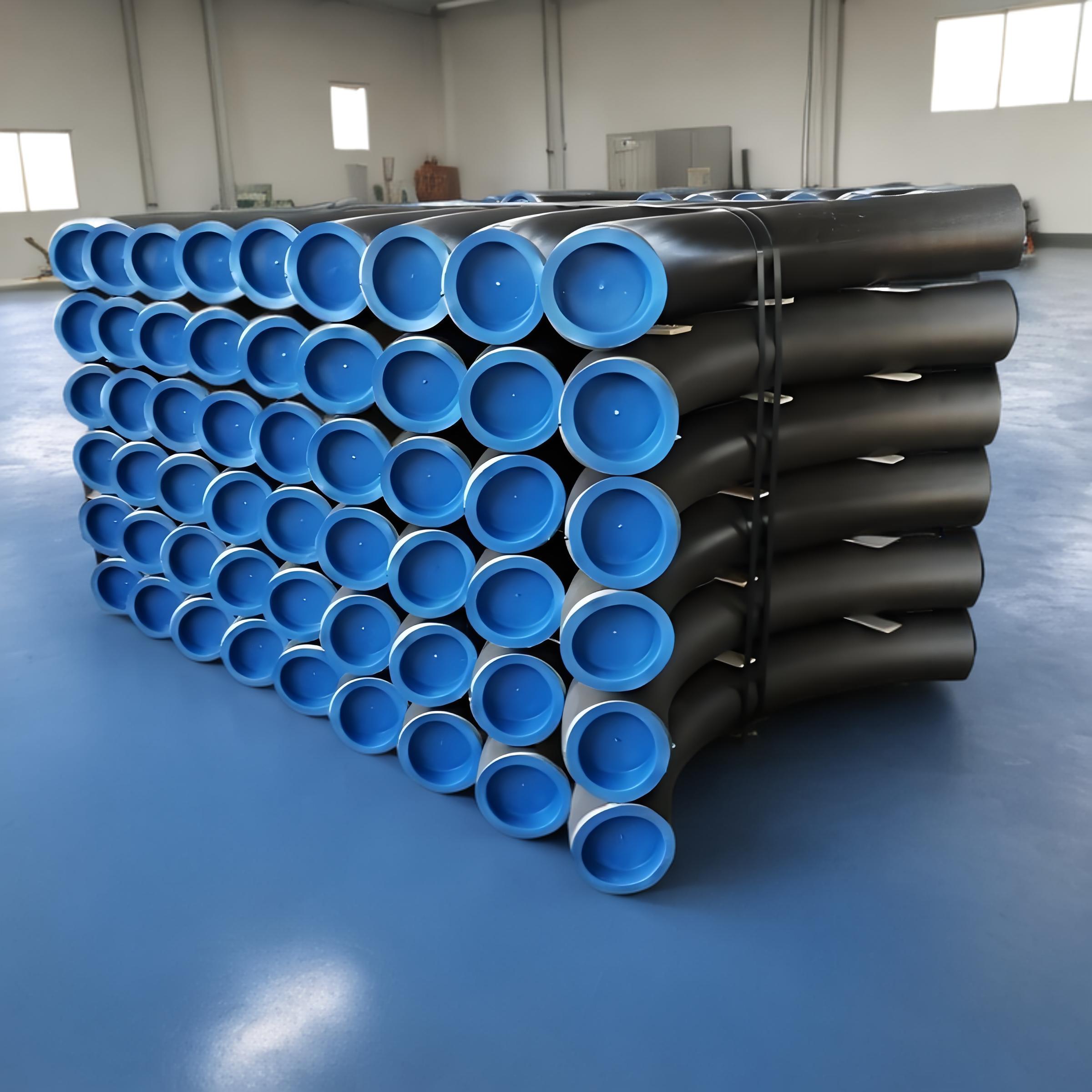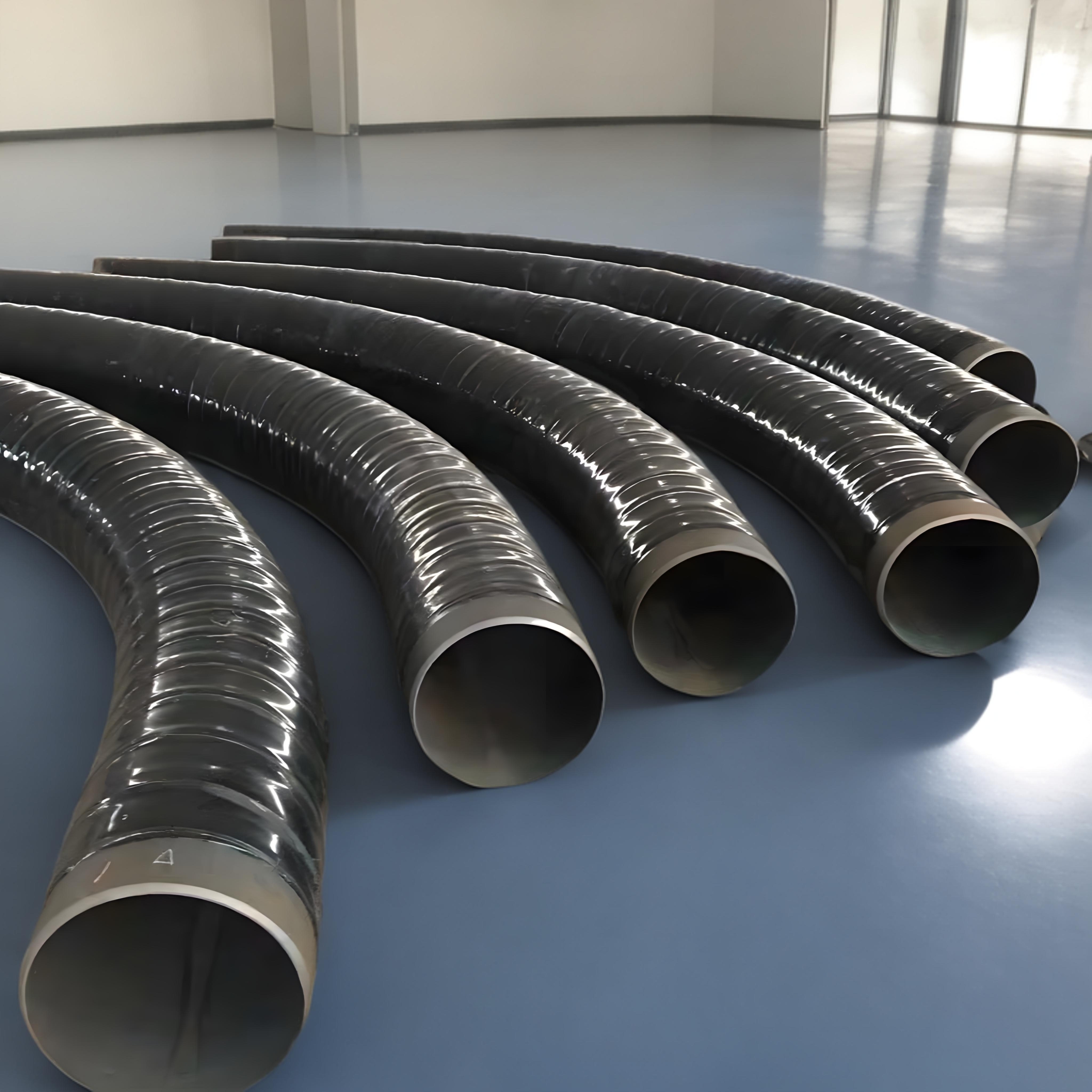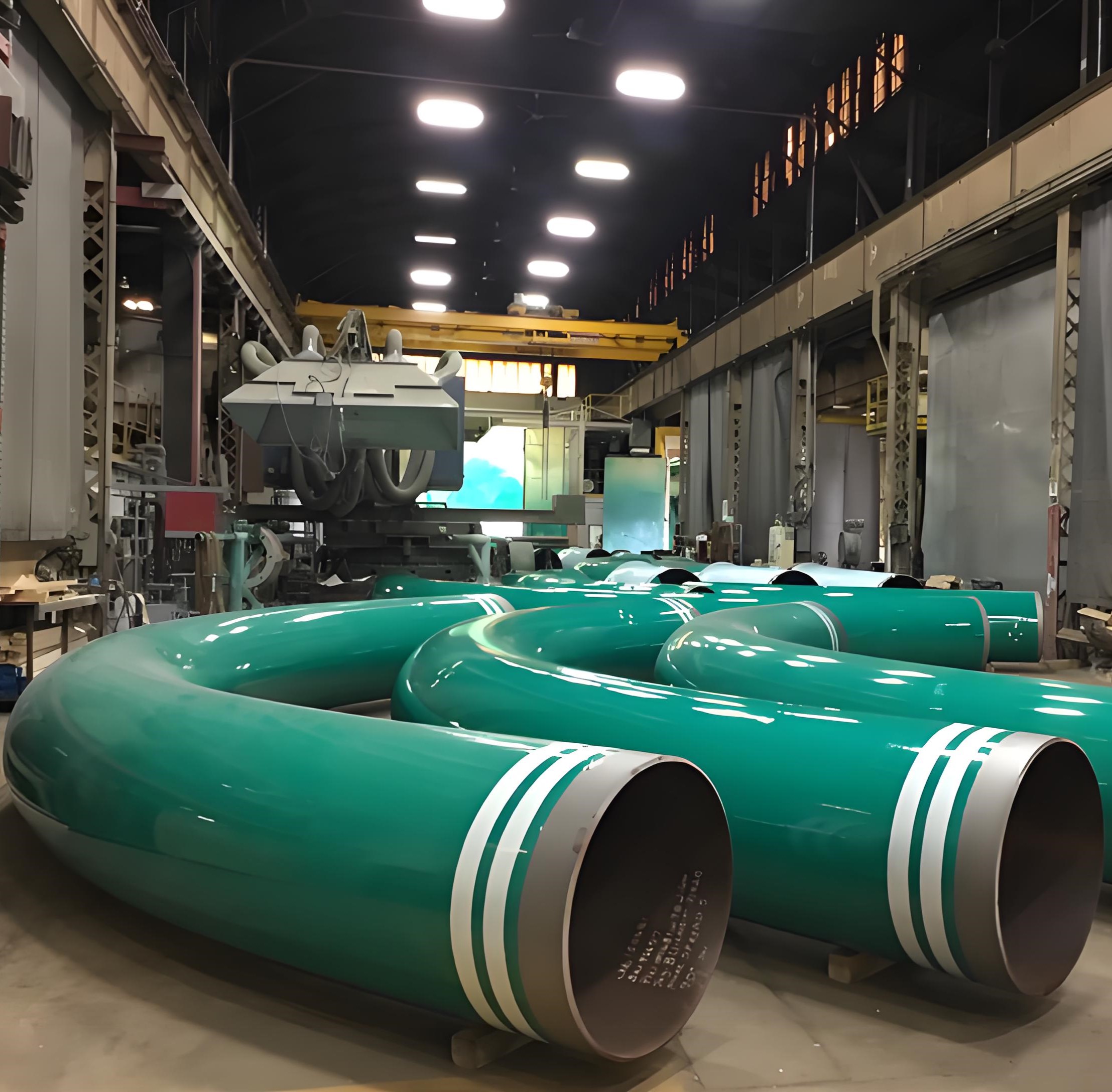ASME B16.49, ISO 15590-1, EN 14870-1 Induction Bends
- OD: NPS 1/2″ – 60″
- WT: SCH40, 80, XS, 120, 140, 160, XXS
- Angle: 15°, 30°, 45°, 60°, 90°, 120°, 135°, 180°
- Types: 3D, 4D, 5D, 6D, 7D, 8D, 9D, 10D
ASME B16.49, ISO 15590-1, EN 14870-1 Induction Bends
Induction bends are essential in pipelines, transporting oil, gas, and other fluids across long distances. Standards such as ASME B16.49, ISO 15590-1, and EN 14870-1 play a crucial role in ensuring these bends’ quality, safety, and reliability. ASME B16.49 provides guidelines for factory-made, wrought steel induction bends used in transportation and distribution systems, focusing on rigorous design and testing requirements. ISO 15590-1 outlines specifications for induction bends in the petroleum and natural gas industries, emphasizing seamless and welded pipe applications. Similarly, EN 14870-1, a European counterpart, harmonizes with ISO standards while addressing specific regional requirements, ensuring that induction bends meet the stringent demands of modern pipeline infrastructure. These standards collectively ensure that induction bends are manufactured to withstand the mechanical and environmental stresses they encounter, guaranteeing long-term performance and safety in critical industrial applications.
ASME B16.49 Factory-Made, Wrought Steel, Induction Bends for Transportation and Distribution Systems
ISO 15590-1 Petroleum and Natural Gas Industries — Induction Bends, Fittings, and Flanges — Part 1: Induction Bends
EN 14870-1 Petroleum and Natural Gas Industries — Induction Bends, Fittings, and Flanges for Pipeline Transportation Systems — Part 1: Induction Bends
Specifications of ASME B16.49, ISO 15590-1, EN 14870-1 Induction Bends
| Specification | Details |
| Standard | ASME B16.49, ISO 15590-1, EN 14870-1 Induction Bends |
| Material Standard and Grade | ASTM A234 WPB, WP5, WP9, WP11, WP22, WP91 ASTM A420 WPL1, WPL3, WPL6 ASTM A860 WPHY42, WPHY52, WPHY60, WPHY65, WPHY70 API 5L PSL 1 & PSL 2 Gr.B-X100M/QS/NS |
| Type of Fittings | Angle: 15°, 30°, 45°, 60°, 90°, 120°, 135°, 180° Types: 3D, 4D, 5D, 6D, 7D, 8D, 9D, 10D |
| Dimension | NPS 1/2″ – 60″, WT: SCH40, 80, XS, 120, 140, 160, XXS |
| Ends Finish | Beveled Ends (BE), Plain Ends (PE) |
| Surface Finish | Black, 3LPE, FBE, Liquid Epoxy, Epoxy Zinc-Rich Primer Coated |
| Manufacturing Method | Seamless, Welded through induction bending |
| Packing Method | Wooden Cases, Pallets, Crates, Bundles |
| Country of Origin | Made in China |
| Transportation | Sea Freight, Air Freight, Land Transport |
Applications of ASME B16.49, ISO 15590-1, EN 14870-1 Induction Bends
Induction bends manufactured in accordance with ASME B16.49, ISO 15590-1, and EN 14870-1 are utilized across various industries where the transportation of fluids, gases, and other media is critical. Here are the primary applications:
1. Oil and Gas Pipelines
- Transportation of Crude Oil and Natural Gas: Induction bends are used extensively in long-distance pipelines to transport crude oil, natural gas, and refined products. The bends allow smooth directional changes in the pipeline route while maintaining structural integrity.
- Offshore and Subsea Pipelines: These standards are crucial for bends used in offshore and subsea pipelines, where high pressure, corrosive environments, and extreme conditions require robust and reliable components.
2. Petrochemical and Refinery Plants
- Process Piping: In petrochemical and refinery plants, induction bends are common in process piping systems with high temperatures and pressures. The bends ensure smooth flow and reduce turbulence in the plant’s transport of chemicals and gases.
- Fluid Catalytic Cracking (FCC) Units: The bends are also used in critical high-temperature sections of refining units like FCC units, where durability and precision are paramount.
3. Power Generation
- Steam and Gas Turbines: Induction bends conforming to these standards are used in piping systems that transport steam and other fluids to and from turbines in power plants. Precise bends are necessary to optimize flow and reduce energy losses.
- Nuclear Power Plants: In atomic power facilities, the bends are applied in high-pressure, high-temperature systems that require the highest safety and reliability standards.
4. Water and Wastewater Treatment
- High-Pressure Water Pipelines: The bends are used in large-scale water distribution systems where high pressure is involved, ensuring that the piping system can handle directional changes without compromising flow or structural stability.
- Desalination Plants: In desalination plants, induction bends are essential in transporting seawater and brine under high pressures and corrosive conditions.
5. Infrastructure and Construction
- Bridges and Tunnels: In infrastructure projects, induction bends are used in pipelines that run through bridges and tunnels, where routing flexibility and structural integrity are vital.
- District Heating Systems: The bends are applied in district heating networks to efficiently transport hot water or steam over long distances, ensuring reliable service in urban environments.
6. Chemical and Fertilizer Industries
- Chemical Processing Plants: Induction bends are used in chemical processing plants where highly reactive and corrosive substances are transported, requiring high precision and corrosion resistance.
- Fertilizer Production: The bends transport raw materials and finished products in fertilizer plants, ensuring smooth flow and reducing the risk of blockages or corrosion.
7. Mining and Mineral Processing
- Slurry Transport: In mining operations, induction bends are used in pipelines that transport abrasive slurries, where durability and resistance to wear are critical.








